What colors make you feel tired? 4 hues to avoid that create understimulating and energy-zapping rooms
Experts explain how to decorate with them more wisely to avoid feeling tired
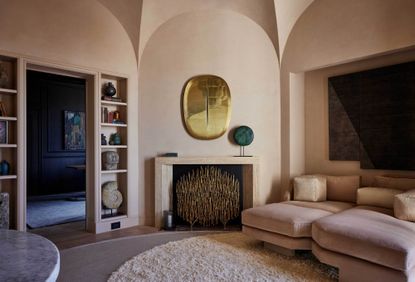

The paint color you choose for your walls can have a big impact on the way you feel day to day. While some shades can uplift us and make us feel alert, others make us feel tired and weary, and although that might be exactly what you're after in a nighttime bedroom setting, you'll still want to avoid a room that looks drab and uninspiring when you wake up.
According to color psychology, there are certain hues - namely, those with shorter wavelengths - that are less stimulating. Think along the lines of soft and less saturated blues and greens. While these are often employed to instill a sense of calm and relaxation, used in excess or within the wrong palette, we won't ever feel uplifted or invigorated in our homes. Get them right, however, and you have the perfect setting for a relaxing sleep sanctuary. Just to make matters more confusing, on the other side of the coin, bold and fiery tones can be so overstimulating that they can also have a similar effect. The key, like anything in life, is to strike the perfect balance.
'The shades we surround ourselves with can have a powerful impact on our emotions and well-being, so, it’s important to not only consider how we want a room look but also how we would like it to feel,' says Helen Shaw, color expert at Benjamin Moore. 'The key is to unpick the psychology of color and choose shades and combinations which work together in harmony.'
If you want a colorful home full of paint ideas that won't zap your energy, here are four colors to be wary of, including expert tips on how to decorate with them more wisely.
1. Fiery reds
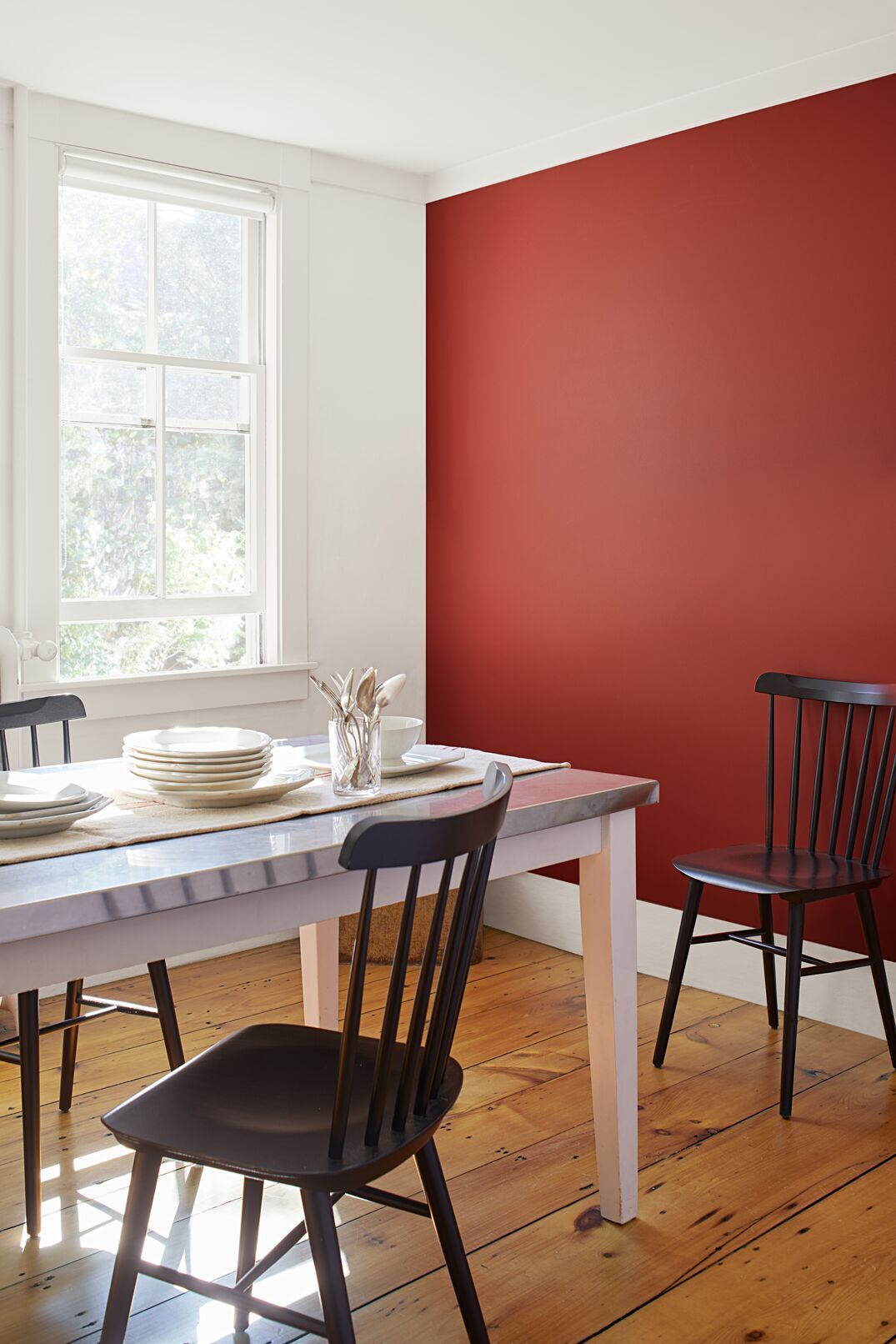
If you know anything about color psychology in interior design, you might be surprised to see this bold hue listed here. Fiery reds have a long wavelength, meaning they're considered a more energetic, uplifting, and stimulating color. The problem is when used in excess, it can actually make us feel more tired (just as an action-packed day of stimulating experiences would), but it will also fail to instill a relaxing atmosphere.
'Vivid, vibrant colors such as fiery red can sometimes be overstimulating and this in turn can make it hard to relax if these shades constantly surround us,' explains Helen at Benjamin Moore. Instead, she suggests a feature wall like the one pictured above as a great way to introduce red to your home and provide the right amount of energy. 'Alternatively, for a more understated look, opt for warmer sun-baked brick or cooler crimson-kissed violets to provide a muted quality that brings depth and elegance,' she says.
 Save 21%
Save 21%
Was: $176
Now: $139

Price: $100
Color: Peach

Was: $338
Now: $92
2. Cool greys
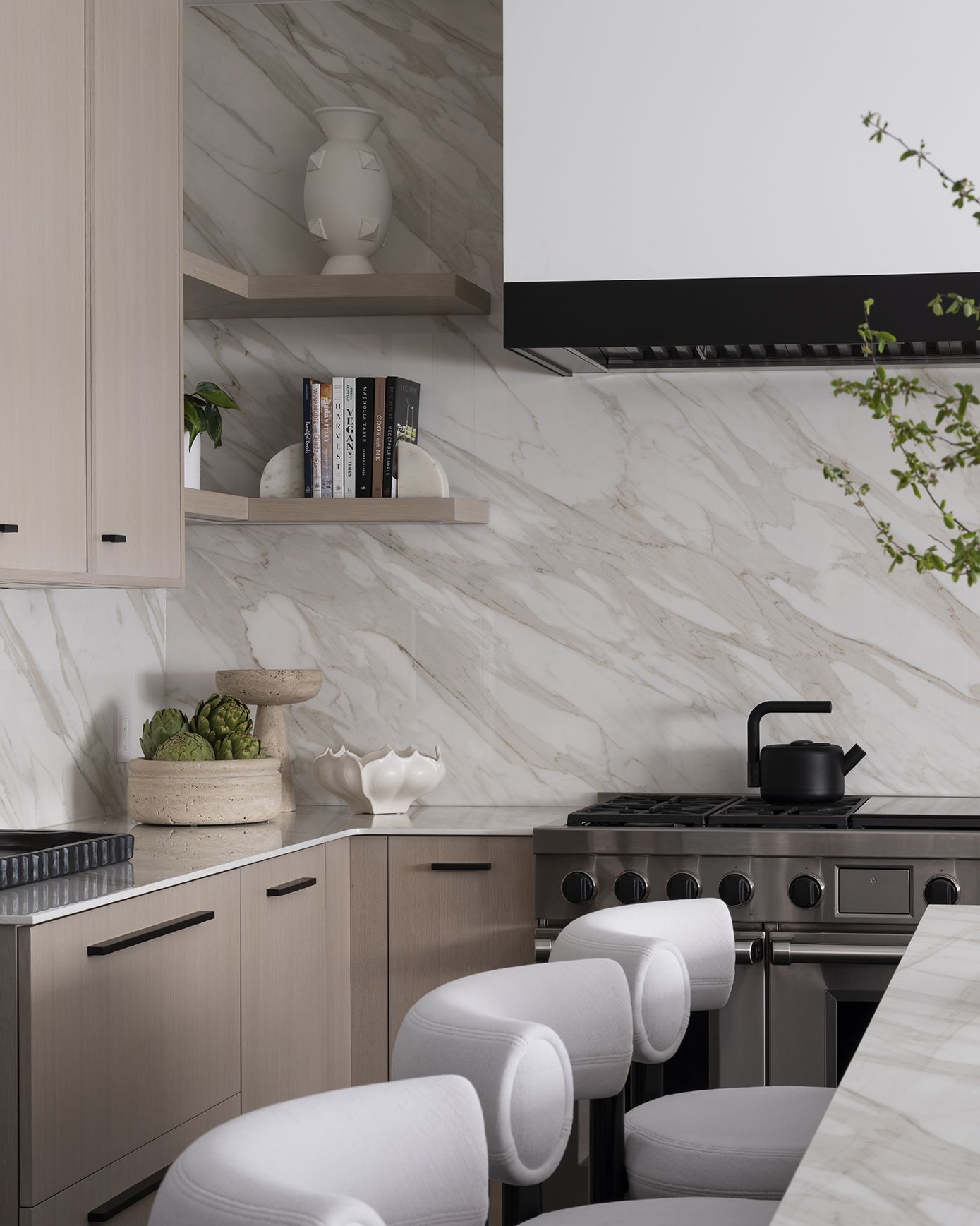
While plenty of designers like to think grey has had its day, there's certainly still a market out there for the likes of grey living rooms and kitchens. A space devoid of bright colors certainly isn't for everyone, but beyond personal preference, there's also good reason why an all-grey interior should be avoided.
According to architectural color consultant Amy Krane, the obvious issue is that the colorful quality - known as 'chroma' - has been removed. 'All kinds of greys fit into this description and for some, this might cause a feeling of tiredness or boredom,' she says. 'The antidote is to mix them with more saturated colors in a space. Adding other colors that have higher chroma but that don’t clash will help elevate the experience into one which holds your attention.'
There's also even more reason to avoid grey tones if your space lacks light. 'Rooms that lack natural light can highlight the cooler undertones, so if you want the room to look brighter with more life and energy, then avoid the traditionally cooler greys with blue undertones,' says Helen. 'Instead, opt for neutrals with pink and red undertones. The soft, dusky rose tone flatters any space and works perfectly to create a blank canvas, yet subtly lifts minimal and contemporary looks.' We love how the kitchen pictured above uses a slight pink tone on the cabinetry which lifts the grey shades seen in the marble veining and steel oven range.

Was: $19.99
Now: $12.99

Price: $49
Color: Riviera

Was: $175
Now: $84
3. Rich dark tones
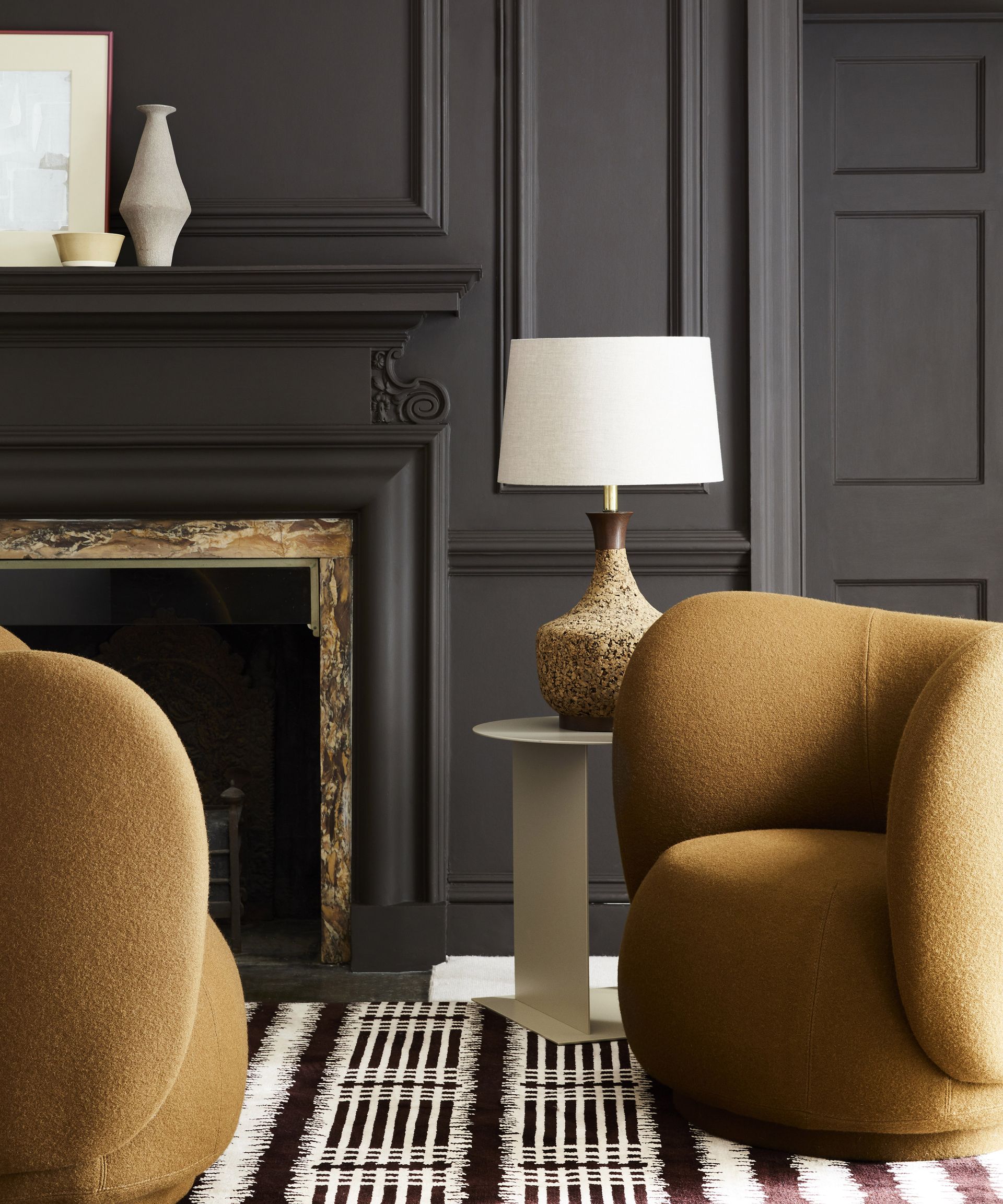
When it comes to paint colors that make you calmer and more relaxed, browns and other rich dark hues are an obvious choice, however, they can risk becoming too tiresome if not used correctly.
'When decorating with rich, dark colors such as black, coffee brown, or inky blue in an all-encompassing color drenching design, it exudes coziness and creates the ultimate intimate space,' says Helen. 'Although this is ideal for a bedroom where you want to unwind at the end of the day, this is not recommended for spaces where being alert is key, such as the home office.'
Even in relaxing living spaces, the overuse of brown on brown can make for a room that lacks depth and dimension. While rich tones are very much the theme of the living room pictured above, they're interspersed with the pops of the invigorating orange chairs and the contrast of the white surrounding decor. Even in color-drenched spaces, don't forget the importance of a little contrast.
Helen also suggests picking out architectural details to highlight in dark paint ideas to prevent the space from being overly dark and drab. 'Whether you follow the line of a skirting board with a blue that can read as black or a rich navy, or inject a flash of forest green on an otherwise tonal surface,' she says. 'Incorporating this color palette in a more subtle way is guaranteed to add interest and to any space without it becoming overpowering.'

Was: $1,215.40
Now: $374.99

Was: $94.99
Now: $89.99

Was: $398.24
Now: $369.99
4. Monochromatic color schemes
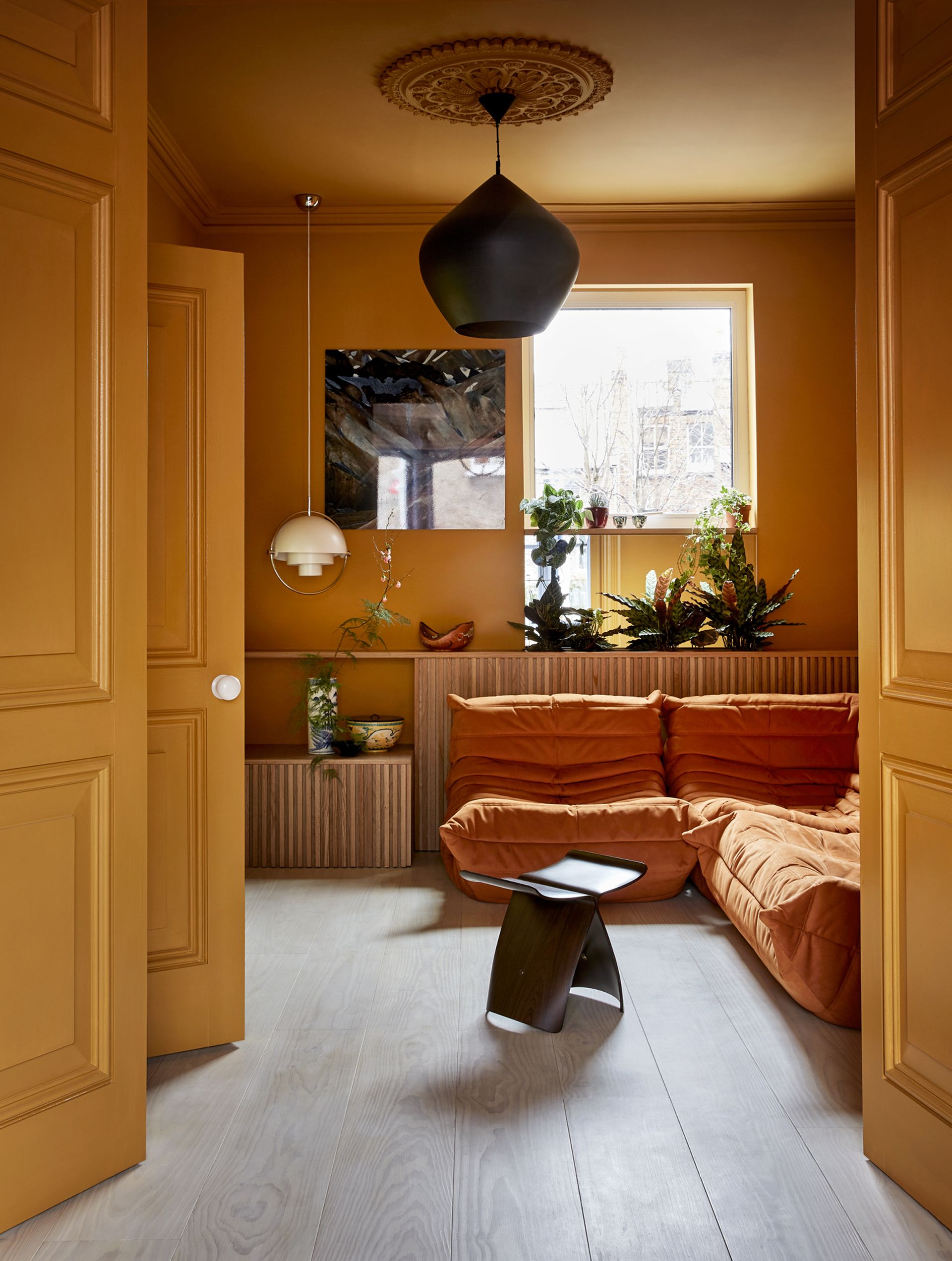
According to Amy, monotone spaces can cause anxiety because they’re under-stimulating. They lack enough variety to have visual interest. For this reason, she suggests avoiding monochromatic color schemes. 'The human response to color is real - it has physiological, psychological, and emotional dimensions,' she says. 'Colors are never experienced as individual hues in a natural environment. Their effect upon one another and us is about how they interact with each other.'
While the color-drenching trend of painting your walls and ceiling the same color can look striking, or feel like a cocooning warm hug, without the right considerations to contrast thrown in, they risk feeling boring and tiresome.
'Colors used together which create a monotone space without hue, chroma ( purity) or value (lightness/darkness) differences create an under-stimulating experience,' Amy explains. 'When the walls, the trim, the ceiling, and even the furnishings and floor coverings are the same hue, what you get is this kind of under-stimulating space. The lack of variety initially causes boredom but over time creates its own kind of anxiety because it differs so much from what we experience in the natural world.'
If you don't want to go ahead with a color-drenching idea, be sure to make the flooring idea a point of contrast, like the space shown above. Make sure there's also plenty of textural interest and a few eye-catching pieces that are in a contrasting color, however big or small these may be.
In our modern world, no one wants a home that makes them feel more tired than they already are. Be wary of these colors and use them wisely for a home that feeds your soul and doesn't zap your energy day to day.

Price: $52.99
Quantity: 1 Gallon

Price: $7.76
Format: Hardcover

Price: $70
Quantity: 1 Gallon
Be The First To Know
The Livingetc newsletter is your shortcut to the now and the next in home design. Subscribe today to receive a stunning free 200-page book of the best homes from around the world.

Lilith Hudson is the News Editor at Livingetc, and an expert at decoding trends and reporting on them as they happen. Writing news, features, and explainers for our digital platform, she's the go-to person for all the latest micro-trends, interior hacks, and color inspiration you need in your home. Lilith discovered a love for lifestyle journalism during her BA in English and Philosophy at the University of Nottingham where she spent more time writing for her student magazine than she did studying. After graduating, she decided to take things a step further and now holds an MA in Magazine Journalism from City, University of London, with previous experience at the Saturday Times Magazine, Evening Standard, DJ Mag, and The Simple Things Magazine. At weekends you'll find her renovating a tiny one-up, one-down annex next to her Dad's holiday cottage in the Derbyshire dales where she applies all the latest design ideas she's picked up through the week.
-
 What are the Most Comfortable Pillowcases? From Temperature Regulating to the Best for Your Skin
What are the Most Comfortable Pillowcases? From Temperature Regulating to the Best for Your SkinWhen you're looking for comfort in your pillowcases, material matters. These are the best you can buy
By Faaizah Shah Published
-
 5 Simple, but Genius Bathroom Layout Tricks That Will Make Your Space Work so Much Harder
5 Simple, but Genius Bathroom Layout Tricks That Will Make Your Space Work so Much HarderSmall switches to how you lay out your bathroom that help make the most of a small space
By Luke Arthur Wells Published

